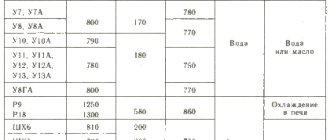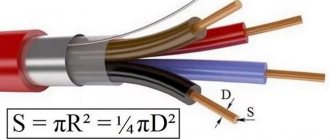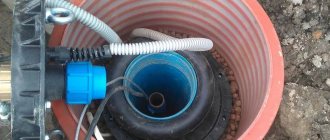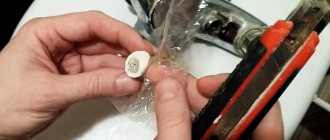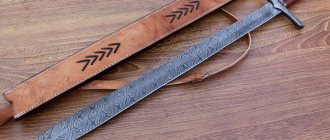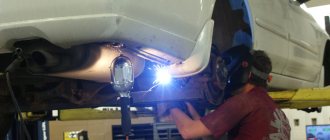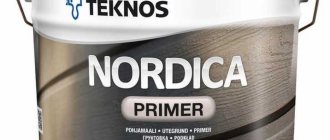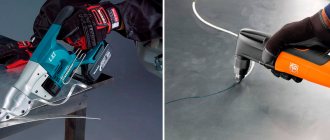When processing a car body to create a uniformly smooth surface, it is almost impossible to do without a primer. Correctly selected acid, epoxy or acrylic primer for a car creates additional protection, eliminates dents and irregularities, and ensures a tight fit of paintwork materials. The most popular due to its ease of use and quick-drying properties is acrylic. However, other types of primers have their own advantages and applications.
What is the soil for?
Automotive primer (from German der Grund - “soil”, “base”) is a specialized viscous mixture that tends to harden and acts as an intermediate layer between metal and paint.
It performs a preparatory function and solves the following tasks:
- ensuring the anti-corrosion resistance of the body and parts, protecting them from moisture and rust;
- improving the adhesive properties of the surface when applying paint and varnish;
- elimination of dents, cracks and chips during cosmetic repairs of the car;
- increasing the service life of car enamel, its strength and preservation of appearance;
- creating a flat surface for painting a car, which ensures good quality of work performed.
The chemical industry produces and markets a large number of base mixtures, differing in composition, number of components and purposes of use. They are sold in liquid and paste form, packaged in cans or aerosol cans.
Based on their protective properties, all types of primers can be divided into 4 groups:
- Passivating. Used for processing the bottom, sills and wings. The surface treated with this composition is impervious to water and air.
- Protective. Slow down the spread of the lesion in case of damage to the paintwork.
- Phosphating. As a result of their use, the surface layer of the metal is corroded and a protective film is formed due to the formation of poorly soluble substances.
- Modifiers. They are applied directly to rust, preventing the spread and increasing resistance to its reappearance. For the protective reaction to occur effectively, a temperature of at least +15°C is required.
Execution Features
Priming metal is almost the same as for products made from other materials, with the exception of some features:
- Before starting the main work, the surfaces must be cleaned of dirt and old paint. All traces of corrosion must be removed from the iron, unless you are using a rust converter - where such preparation is not required.
- If dried paint is difficult to remove from metal substrates, then it is necessary to use a softener. Once applied, this process is easy. As a rule, softeners contain anti-corrosion additives.
- After removing contaminants, the surfaces must be sanded to a shine and washed. Products made from non-ferrous alloys are smooth and easy to wash.
- Before you begin priming the metal, you should degrease it if possible. This will greatly improve the quality of primer application and increase its adhesion to the base. Large structures are processed using special machines; for small ones, cotton fabric can be used.
- The primer is carried out on a dry, clean, grease-free metal surface. The solution is distributed over it in a thin layer, and as it dries, the remaining necessary layers are applied. It is important to note that two thin layers provide more protection than one thick layer.
- After the last layer has dried, you must immediately begin the final painting of the product. If this is not done immediately, then dust may accumulate on it, which will significantly reduce adhesion, and this will affect the quality. In the next article, read about how to paint to prevent metal from rusting.
Compliance with all stages of preparatory work and properly done metal priming can ensure the beauty and high-quality protection of metal structures, significantly increase their service life and postpone the prospect of the next cosmetic repair for a long time. A high-quality primed and painted product is reliably protected from aggressive environmental influences and can delight you with a fresh appearance for a long time.
Varieties by number of components
An important performance characteristic of a primer is its drying speed.
This indicator depends on the use of additional components when composing the mixture: filler, hardener, various chemical additives and elements.
Based on this criterion, soils are divided into 3 groups:
- One-component. They go on sale ready-made. Before starting work, just stir them until they have a homogeneous consistency. They are used extremely rarely in auto repair shops and service stations due to the long drying period (several days).
- Two-component. Before use, they require adding a hardener, which saves a lot of time when working. Dries in 24 hours.
- Ethanol. Used to eliminate defects in minor damage. They use the ability of alcohols to quickly evaporate, which allows the composition applied to the surface to dry within 1 hour. In both soft and hard consistency, they are convenient for application and subsequent sanding.
Questions of wise choice
In order for priming work to be carried out properly, the following issues must be examined:
- Decide on the material of the surface being treated - whether it contains any different constituent structural elements (for example, structures made of metal and wood that need to be painted over at the same time).
- Check the condition of the base - if the surface is too porous or loose, it will absorb a significant amount of primer, which means increased consumption of funds. Accordingly, a choice will need to be made in favor of certain compounds.
- It is necessary to consider the type of layer on which the primer solution will be applied.
- Assess the environmental conditions - is the humidity level expected to increase, or is a sharp increase/decrease in temperature expected.
- Assess the approximate consumption of primer material - this indicator will affect the method of application. For example, painting walls or other surfaces with a brush is a labor-intensive process, however, in this case the savings will be obvious. If you work with a roller, the consumption will increase. Professionals choose the “golden mean” and use a spray bottle.
When choosing a mixture, the name of the manufacturer is also important, because brands that value their reputation supply the best product to the market, guaranteed to provide a high-quality effect. These include:
- "ARRR";
- "Marshall";
- "Tikkurila";
- "Polymin";
- "Escaro";
- "Knauf".
Classification by composition
The composition of the mixture determines the place and technology of its application. The presence of aggressive acids in the primer forms a protective film due to chemical interaction with the metal. The presence of resins provides physical impermeability to moisture.
The addition of zinc, aluminum, and chromium powders creates the effect of galvanized body and parts, and inert particles guarantee water repellency.
In addition, application is carried out on different materials and each of them requires its own mixture.
All primers for cars are divided into 2 main types:
- Primers (from the English prime - “main”, “first”), intended for primary processing. Their main tasks are to create anti-corrosion protection for the body and ensure better adhesion of the car enamel to the surface.
- Fillers (from the English fill - “fill”). They are used during secondary finishing for leveling, forming a substrate for paint and protecting against weak mechanical influences.
Acidic (for rust and problem areas)
The action of these compositions is based on the principle of passivation or phosphating, since the most commonly used component in them is phosphoric acid. It allows you to implement the mechanism of adhesion to the surface:
- penetration of the primer into the metal structure to a depth of 0.05 microns due to corrosion of the surface;
- entering into a chemical reaction with the formation of sparingly soluble phosphates;
- the formation of a durable anti-corrosion film from them during hardening.
It is recommended to apply the primer in 2 layers, as a result of which its maximum possible adhesion to the surface being treated is achieved. This provides not only protection against rust, but also high quality and durability of the paintwork. The adhesion process of acid mixtures is equally effective with any alloys from which a car can be made (galvanized and galvanized steel, non-ferrous metal, aluminum alloys, etc.). The aggressiveness of the impact is used to process hard-to-reach places and parts.
It should be taken into account that it is no longer acceptable to putty on such a surface. Application of the material causes a reaction that destroys the primer layer.
Epoxy for metal
Another equally popular group of primers are epoxy resin-based primers. When using them, material properties such as viscosity and density are used. Resins create an air- and moisture-proof thick layer up to 0.15 microns, which provides long-term (up to 7 years) protection for treated parts. The use of such mixtures prevents the appearance of bubbles, and the increased stickiness allows them to be applied over putty, metal and remnants of old paintwork.
Epoxy primers do not require sanding. You can putty and paint over them without waiting for complete drying. And although it is recommended to apply a layer of acrylic on top of them, practice shows that this is an unnecessary precaution. Being chemically neutral, epoxies can act as an insulator between problematic or incompatible surfaces and materials.
Acrylic primer
Acrylics belong to the class of fillers (secondary primers) and are intended to eliminate minor risks and surface defects remaining after sanding, as well as to create a substrate for final painting. To ensure color stability, they use colored pigments: red, black, white and gray. For minor abrasions and scratches, this makes the damage invisible, and also increases the covering power of the enamel and saves its consumption.
Many acrylic mixtures allow for a “wet on wet” painting method. This eliminates grinding and saves processing time and labor costs. But the mixture should be applied in 2-3 layers to create a thickness of 100-150 microns. Acrylics are resistant to temperature fluctuations, humid conditions, and mechanical vibrations. You can work with them on both metal and plastic.
They are two-component; depending on the TDS, they are mixed with a hardener and solvent in various ratios - 5:1, 4:1 or 3:1. This determines the viscosity and adhesive properties of the resulting material. But single-component aerosol levelers, produced in cans, have gained particular popularity. They are convenient for cosmetic repairs, do not take time to dilute the mixture and dry quickly.
Composition for plastic parts
To prime plastic parts (bumpers, fenders, interior decorative elements), special adhesive compounds are used, which are applied in one layer and create strong adhesion to the material. This is achieved by liquefying the surface and then hardening it. Most often, one-component acrylic and alkyd mixtures are used for these purposes. They are transparent, and to distinguish the primed surface from the untreated one, a little silver paint is added to them.
However, in 80% of cases, plastic parts go on sale already prepared and do not require reprocessing.
Existing types of primer mixtures
Modern and most popular types of primer mixtures are represented by the following compositions:
- Acrylic or emulsion - they are suitable for almost any type of substrate: wood and plasterboard, concrete and brick, as well as for applying putty and primer. The only exception can be metal bases, since the vast majority of these substances do not contain anti-corrosion substances. Among the main advantages of acrylic-based compositions are ease of use and the ability to be diluted with tap water. They dry quickly (2-4 hours) and have no unpleasant odor, which makes acrylic primer extremely convenient for treating residential premises. Acrylic primers can be produced for both deep penetration and surface application.
- Alkyd - widely used to prepare wood surfaces for painting, and their drying time varies from 10 to 16 hours. This priming solution, as it were, “loosens” the surface layer of the wood, which significantly increases the adhesion between the wood and the paint. This primer qualitatively increases the durability of the coating and extends its service life. It is possible to prime metal substrates with alkyd mixtures, however, they are ineffective when treating mineral surfaces.
- Polyurethane and epoxy are essentially paints that are diluted with appropriate solvents. As a rule, they process concrete in order to prepare it for applying enamel.
- Shellac - such compounds are highly specialized and are used for processing branches on cut coniferous trees. They can also be used with water-soluble stains.
- Polystyrene - used on plastered and wood substrates, however, due to their high toxicity, they should be used only for outdoor work or in well-ventilated non-residential structures.
- Special compounds for metal - they are divided into phosphate, insulating and protective. Insulating materials contain red lead and zinc white in their structure. They simply do not interact with the metal, and mechanically do not allow moisture to penetrate it. The group of insulating compounds includes phenol-formaldehyde and glypthal compounds. All of them have different drying times - from a couple of hours to several days. Protective (also known as passivating) ones have a high price, but at the same time they have a high quality threshold. Can be used for both ferrous and non-ferrous metals. Due to the high zinc content (about 90%), this coating can withstand aggressive environments well. Phosphate ones increase the adhesion of metal to paint, while simultaneously producing an anti-corrosion effect. Before starting work, this primer must be diluted with an acidic solvent. Application should occur in several layers under stable enamel. Most suitable for working on ferrous metals.
Advantages and disadvantages of soils
Despite the fact that the primer is not visible at the end of the work, both the quality and durability of the completed painting depend on it. After high-quality coating application, the following are guaranteed:
- protection against rust and corrosion;
- smooth substrate for painting;
- presentable appearance of the car;
- there are no reasons for cracking, bubbles and subsidence in the enamel.
What primer should be chosen to achieve this is up to the car owner to decide for himself, but one piece of advice from the experts is worth listening to. The point is that you cannot skimp on this mixture.
You should choose proven brands: only in this case can you count on getting a high-quality result.
Cheap primers are dangerous because during drying they shrink unevenly, which leads to disruption of the evenness of the coating, loss of appearance, the formation of cracks and the formation of rust.
Priming technique
When using, it is necessary to take into account the peculiarities of applying such products. The rust primer is applied as follows:
- The surface is cleaned from loose corrosion, dirt and dust. If necessary, it is degreased and washed.
- Apply a thin layer of primer; it is important that it has the same thickness over the entire area. For processing, use a brush, roller or spray gun; you can also use products available in aerosol form. The first layer of rust primer is applied as thinly as possible. In subsequent stages, the substance can be applied thicker.
- Allow the finishing coat to dry, and then, if necessary, treat the metal part with paint or varnish.
The drying time of individual layers varies depending on the air temperature indoors or outdoors, humidity, and other factors.
Popular manufacturers of primers for painting
The leading positions in surveys and ratings belong to foreign companies, among which the products of widely advertised brands stand out:
- Hi-Gear;
- Liqui Moly;
- Dynacoat;
- Mobihel;
- NOVOL;
- Duxone;
- ABRO.
Domestic manufacturers, distinguished by high-quality products and gaining fame in the country, are represented by the following companies:
- “Russian Paints” (Yaroslavl);
- Moscow LLC "Empresa-M";
- LLC "KhimTorgProekt" from St. Petersburg.
The best primary acid soils
Among single-component acid primers that do not require the addition of catalysts, experts highlight Mobihel Primer 1K. It is convenient and easy to apply. Used for priming on steel, galvanized and aluminum. Has a short drying time. Estimated price 950-1 thousand rubles. for 1 l.
In two-component ones, a hardener is added, often included with the main mixture. Widespread:
- NOVOL Protect 340 Wash Primer - used on ferrous and non-ferrous metals. Hardens quickly. Does not require sanding, but acrylic processing is required. Sold together with hardener. Average prices: 500 rub. per set 0.2+0.2 l; 1.9-2 thousand rubles. — 1+1 l.
- Radex CR 1+1 Activator - applied to any metal surface. Recommended for repairing new cars. The price for a set of 2 cans ranges from 2 thousand rubles. up to 2.5 thousand rubles.
Why is this necessary?
First, let's figure out why you need to prime metal before painting. Well, it’s clear with steel and other ferrous metals - they actively corrode and this is clearly visible. Moreover, if you do not protect, for example, the body of a car, it will rust through.
Another question is whether non-ferrous metals and alloys need anti-corrosion protection, and whether primer is used on galvanized metal. Indeed, a dense oxide film forms on the surface of the same copper or aluminum, which partially protects the metal, but on the street this film is not enough and a primer for the metal is needed for protection.
As for galvanizing, you should not forget that the layer of zinc on a steel sheet is very thin and if nothing threatens it in the room, then in the open air the sheet will begin to rust after 5-7 years, but in the city with its acid rain, galvanizing will last no more than 3 years. We've sorted out the reasons, now let's move on to the types.
Even powerful metal structures need to be protected from corrosion.
Recommended sealer primers
A group of sealers (insulators) is designed to eliminate the possibility of contact of conflicting materials. The most effective for this purpose are viscous epoxies, which create a dense protective layer.
Acrylic primers designed for wet-on-wet work also have insulating properties. They are used either as a direct substrate for painting, or with the subsequent addition of filler.
Primers for secondary application
The functions of fillers are varied, since they are the final stage of work before applying enamel and are designed to eliminate all existing surface defects, level planes and joints, isolate problematic materials and ensure a tight adherence of paint. When working with them, it is necessary to eliminate the slightest risks and carefully polish the surfaces (to a depth of 30 microns). Leveling should remove all defects and pores remaining after putty, and level out the transition points from one plane to another.
Colored, for painting
The use of colored primers became popular in the 80s and 90s. last century. Few people imagined that such a simple know-how as adding coloring pigments to the mixture would become widespread and provide such great savings in material consumption. This especially applies to interior parts and the space under the hood. The Japanese, Koreans, and more recently AvtoVAZ have refused to paint them, considering treatment with a colored (tinted) primer coating sufficient.
High build primers
The standard thickness of primers applied in 2-3 layers is 100-140 microns. However, a number of manufacturers (Liqui Moly, AUTOP) produce compositions that, when applied, form a layer of 260-300 microns. They are convenient to use on large surfaces during major repairs. The use of such primers ensures high-quality leveling and allows you to eliminate the putty step from the processing process. These primers are most often produced in the form of an aerosol and demonstrate high-quality adhesion when painted wet.
Soil-aerosol companies
The convenience of using the compounds in aerosol cans, their ability to dry quickly and the ability to save effort and time (there is no need to dilute the mixture or work with a spray gun) were highly appreciated by repairmen. The Russian market today is dominated by such manufacturers as Kudo, Sadolin, Loctite, Jeta Pro, Brulex, NOVOL and many others. The price is also attractive - from 250 rubles. up to 800 rub. per canister with a capacity of 0.5 liters.
Purpose of primer mixtures
First of all, priming the bases will help to apply subsequent layers of paintwork in a better manner. In addition, such a coating will last much longer. There are some types of primers that can regulate the porosity of the surface being treated while simultaneously strengthening it. There are also compounds that prevent premature wear of materials and protect them from rust. It is worth noting that the use of primers for painting will significantly reduce the consumption of expensive paintwork materials. Thanks to priming, the paint lays down in an even layer, and existing unevenness will be smoothed out.
High-quality primers for plastic surfaces
For high-quality priming of plastic parts, their preliminary preparation is important, which consists of heating or exposing the polypropylene to an open flame (evaporation technology), subsequent matting and removal of fats and resins. The steady popularity of NOVOL, Reoflex and Liqui Moly in this area wavered after the appearance on the market of new products from the German Spies Hecker and the Japanese Kansai.
- Acid primer for cars
- Which brake fluid to choose
- The best way to treat the underbody of a car against corrosion with your own hands
- Which hard wax for cars is better?

